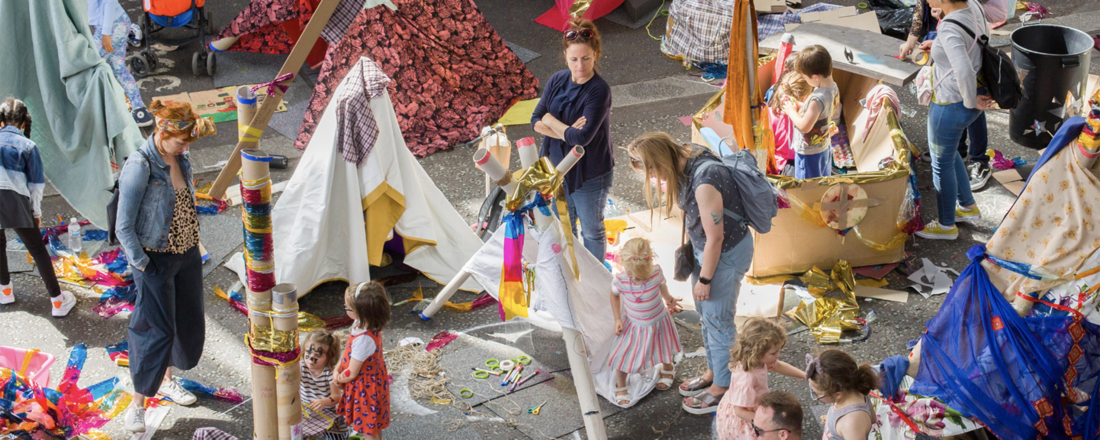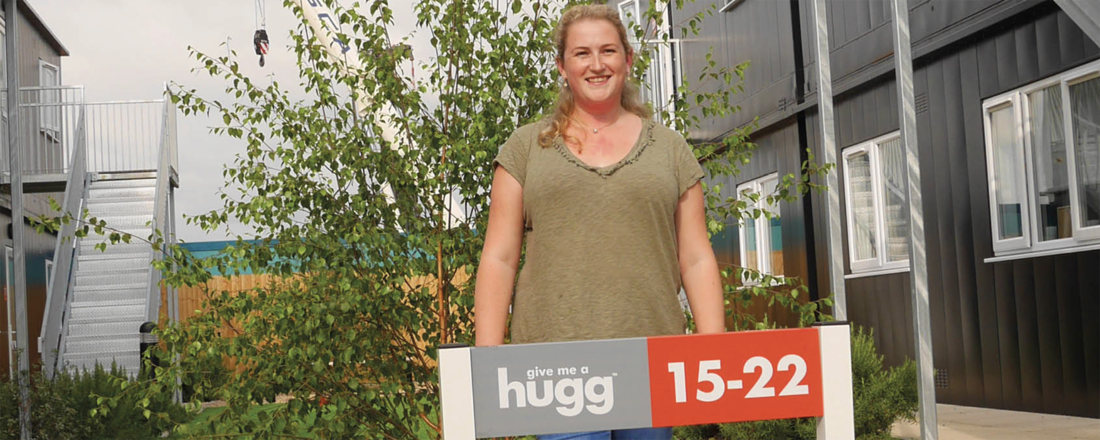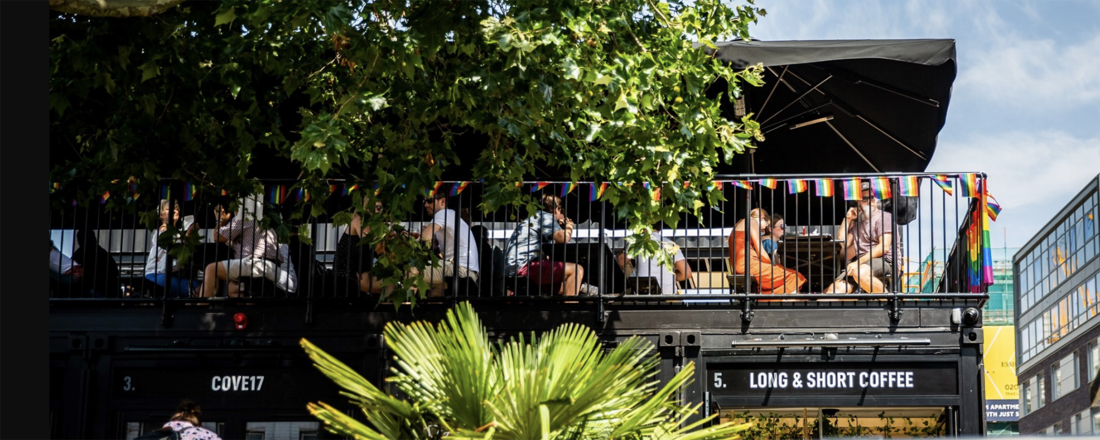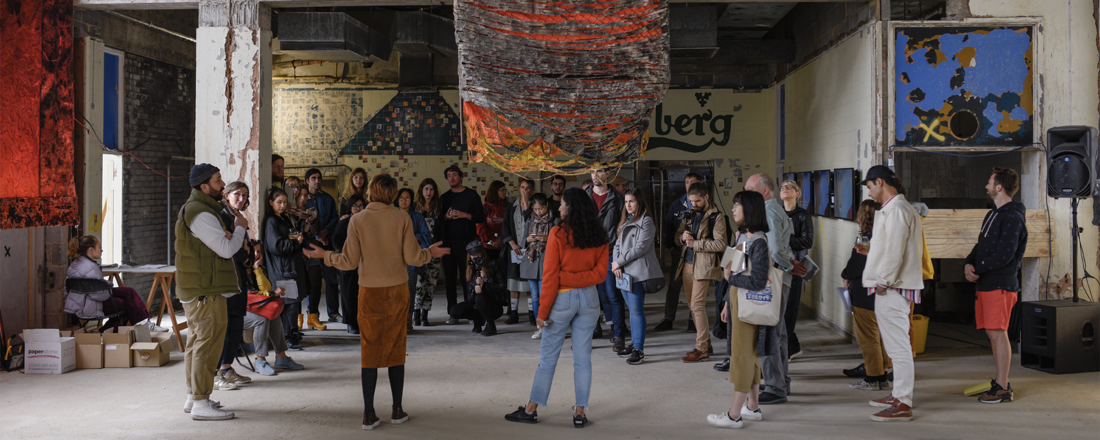Get updates from The Developer straight to your inbox Yes, please!
Meanwhile Prize winners announced
Six meanwhile projects have been selected as winners of the inaugural Meanwhile Prize, a new award for pop-up interventions that have made a positive contribution to place in the UK.
The Developer has announced six winners for this year’s inaugural Meanwhile Prize, in a bid to recognise the breadth of exciting projects taking place in this new field of urban development.
The winners will be exhibited in a dedicated gallery on Stand H260 at the HOMES UK 2019 exhibition, which kicks off tomorrow. One of the largest gatherings of the UK residential sector with 6,000 attendees, HOMES UK takes place on 27-28 November at London’s ExCel.
An informal drinks reception will take place at 4.45pm on Stand H260, which is open to anyone who would like to attend, and where the winners will give a short talk. Registration to attend the event is free.
The Meanwhile Prize was launched this year by The Developer to recognise temporary interventions that have made a positive contribution to place in the UK. Entrants were encouraged to submit words, photographs, clippings, drawings, letters and other supporting documentation.
On the launch of the Meanwhile Prize, Christine Murray, editor-in-chief of The Developer, said: “Temporary projects can support places in transition. They can foster community and facilitate co-creation, attract people to a new area, provide essential interim services or simply inject a bit of excitement and character into a vacant site or construction zone.
“With this new prize, we hope to find innovative approaches to mitigating the disruption of construction and the stress of change while making a positive social impact through its contribution to urban life, generosity or joie-de-vivre.”
Judges
- Pam Alexander OBE, chair, Commonplace Digital; non-executive Director, London Legacy Development Corporation
- Angus Dodd, chief executive, Quintain
- Darren Comber, chief executive, Scott Brownrigg
- Liza Fior, founder, MUF Architecture
- Christine Murray, editor-in-ehief, The Developer
The projects were scored individually by the judges, with six projects being selected for recognition.
The six winners of the Meanwhile Prize
Winner: London’s Biggest Play Street (pictured below) by the Museum of London, with Dinah Bornat of ZCD Architects, Islington Play Association and Play Assocation of Tower Hamlets
Across three weekends in August 2019, ZCD Architects created London’s Biggest Play Street, where children took over a 1,000 square metre street space in Smithfield, with freedom to play in an area not known for its child-friendliness.
The Grand Avenue in Smithfield Market and Smithfield Rotunda (on the final day) were closed to traffic and divided into a water area, jumping area, den area and safe area for smaller children.
Children were free to use recycled loose parts – cardboard boxes and tubes, tyres, carpet, and materials – to invent, interact and play as they chose in each zone. This structured environment meant that they could play in a way that was genuinely creative and self-directed.
The project was delivered with Islington Play Association and the Play Association of Tower Hamlets as part of the Museum of London’s Culture Mile programme. It took place outside the museum’s new site at Smithfield Market, and tested ways to transform the public realm and build on pedestrian priority plans.
London’s Biggest Play Street provided the space, time and permission for children to play freely, successfully demonstrating what a child-friendly public realm could look like in an area that is about to undergo significant redesign.
It was also delivered on a modest budget. All activities were entirely free, to attract the widest possible range of users. Attendance increased over the three sessions, from 300 people for the first day to almost 700 on the second. Several thousand attended the third event, which was incorporated as part of a wider street party. Dwell time was long and several families made repeat visits across the three days.
Winner: Hugg Southampton (pictured above) by Southampton City Council with Hugg Homes
Established in 2017, Hugg Homes’ bespoke modular units make use of inactive land owned by parent company Inland Homes or a third party to provide a high-quality, cost-effective and quick solution to meeting immediate housing needs.
Three million new social homes are needed by 2040, but only 6,000 are being built each year. For local authorities, this shortfall is reflected in ever-increasing waiting lists and a growing number of families seeking temporary accommodation.
Rather than dormant sites lying empty, it makes better sense to use the land to meet the local need for high-quality housing, alongside longer-term regeneration investment.
Unlike bed and breakfasts, hostels and other forms of temporary accommodation often resorted to by local authorities, Hugg homes are purpose-built, bespoke to the site and properly insulated to required thermal and acoustic standards.
The homes can be available in as little as 12 weeks and their ‘pop-up’ nature means family displacement can be avoided, offering continuity of community services, education and family support networks. Modular homes also benefit from flexibility and can be tailored to the land available – from one or two units to whole communities.
The first Hugg scheme to go live was Hugg Southampton in the Chapel Riverside area of the city on land that is being developed by Inland Homes in partnership with Southampton City Council.
Twenty-two properties were made available for occupancy in November 2018 and were fully let by February 2019. The scheme is mixed-tenure, with six Huggs let to Southampton City Council and provided as social housing, with the remainder offered for private rent at 20% below market rates.
Winner: Crate St James Street (pictured below) by Waltham Forest Council with Crate Places UK and St James Big Local
A former car-park, the Crate St James meanwhile enterprise hub was launched in June 2019. Part of Waltham Forest Council’s South Grove/St James Quarter planning policy framework, the overall development proposes a new neighbourhood of up to 700 new homes and commercial space for creative industries.
While these plans are being developed and brought forward, the council and local community group St James Big Local worked closely to develop a shared vision for activating the car park site through short-term creative use. The council offered a five-year temporary lease on the site and worked closely with Crate to agree flexible planning use classes.
The council and the local community group undertook an expression of interest process, which shortlisted and selected Crate Places UK as the preferred operator to bring the vision to life.
The scheme has brought benefits to the western end of Walthamstow town centre, increasing footfall and acting as a catalyst for future commercial development alongside more residential development in the pipeline.
Crate Places UK invested £1m in enabling and developing the site and – through creative use and layout of crates and careful curation of uses – two open terraces, as well as landscaping and public realm improvements.
This has resulted in further interest and investment in the St James Street area, with new businesses locating in the area in the four-month period since Crate launched.
The 32 affordable workspaces are 100% occupied, 70% by local SMEs. There were 600 expressions of interest for the space – a strong indication of the demand for affordable workspace.
Winner: The Silver Building (pictured above) by Projekt with Justin Burt of Soda
The Silver Building is a bustling artistic, entrepreneurial and events hub that is home to scores of creative businesses, providing genuinely affordable workspaces for everyone from large-scale set designer Block 9 to photographers and traditional artists.
Working with the London Regeneration Fund and the Greater London Authority, the Silver Building has brought social value to a once barren area of London. Vacant while the new Thameside West development is under construction, the businesses will have a new permanent home once it is complete.
The 50,000 square feet, imposing brutalist block lay derelict for 15 years. It now consists of 40 studios, large workshops, an art gallery, a cafe/bar and various event spaces. Within a year, all the workspaces in the building were full. Six local Newham residents work there, with five new jobs created at the cafe.
The Silver Building has hosted music events, bringing culture to the area from artists such as world-renowned Japanese composer Ryuichi Sakamoto, and events from Patta/Deviation, NTS, Block 9 and the Re-Textured festival, which attracted 1,500 people over the course of a weekend.
Art exhibitions have included Silver Sehnsucht (international group show), which brought in 2,000 visitors over two weekends, group show Underground On The Up, The London Festival of Architecture, Pervillion, and student shows for the University of the Arts London and the Royal College of Art.
Winner: Open House Oxford (pictured below) by Lucy Warin of Transition By Design with Alex Towler, Katie Reilly, Andy Edwards, Charlie Fisher, Emma Gordon and Mina Samangooei
In November 2018, Transition by Design launched Open House, a ‘public talking shop on housing and homelessness’, in an empty shop front on Little Clarendon Street – a popular shopping destination in the centre of Oxford.
Oxford is a polarised city, with extreme levels of both wealth and poverty. There is little understanding between socio-economic groups as to how people are experiencing housing.
Building on the ‘urban room’ recommendations from the Farrell Review, the brief was to build a room that connected people, built empathy, and catalysed conversations about and action on creating a fairer housing system.
Participatory workshops were run to co-design an environment that made it easy for participants to talk to strangers about housing, and catered for people experiencing trauma, were neuro-divergent and/or had some chaotic behaviours. The space also acted as a venue for events and was open for seven hours a day, four days a week.
Over 195 days, Open House ran 159 events and welcomed more than 5,500 people through its doors. Visitors varied hugely and included young families living in temporary accommodation, people who were rough-sleeping and a homeowner seeking options for what to do with spare bedrooms.
Open House served as an example of how Oxford’s many empty shops could be better used for community projects and drew increased footfall to a high street in decline.
Transition by Design is now working with Lankelly Chase to develop the idea and take it to other areas with empty shops and housing needs.
Winner: The Brentford Project (pictured above) by Ballymore with HAL Architects, AHMM, Glenn Howells Architects, Maccreanor Lavington, Johnson Naylor, Amos & Amos, Huw Morgan and Octink
An eight-year regeneration project spanning 11.8 acres, The Brentford Project establishes a new town centre and revitalised high street, with 876 homes alongside retail, leisure, commercial, cultural and community spaces.
Following a lengthy planning and compulsory purchase order process, there was confusion and lack of confidence in the community about delivery of the project. To re-engage locals and share the vision, Ballymore activated a derelict pocket on the River Brent to bring the waterfront to life.
The Brentford Project began as a three-month cultural and community engagement initiative celebrating the town’s creativity and establishing it as a platform for the arts, live music and food. Ballymore transformed abandoned warehouses into a 4,000 square feet event and exhibition space, information centre, and restaurant and bakery Rye by the Water.
The Brentford Project has brought previously unused spaces back into use sooner than planned, creating an inviting area in the heart of Brentford where people can gather, relax and spend time – something the area previously lacked.
Also on-site is the interim home of classic car hub Duke of London. Ballymore put on events and workshops in collaboration with local businesses including: affordable co-working studio The Maker Station; artist collective Johnsons Island Artists; Brentford & Chiswick Local History Society; local musician Robert Hokum; and nearby independent craft brewer Kew Brewery.
The Brentford Project welcomed more than 3,000 visitors throughout the summer. Many attended several events, returning with family and friends. Rye by the Water has been popular since opening on 25 June 2019, averaging 50-60 visitors per day, with more at weekends.
Since launch, positive sentiment has grown around future plans for Brentford, with negative feedback about the project drastically reducing throughout the summer.
Sign up to our newsletter
Get updates from The Developer straight to your inbox
Thanks to our organisation members
Become a member
© Festival of Place - Tweak Ltd., 124 City Road, London, EC1V 2NX. Tel: 020 3326 7238






